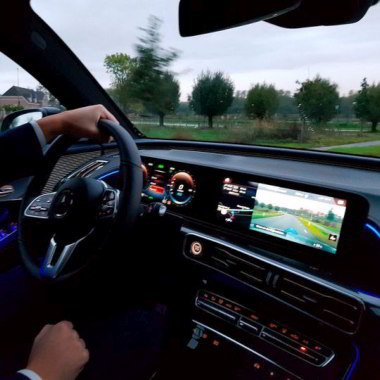
Views: 37
– The possibilities that a connected car offers are very comprehensive. As a result, it is not just a web-connected vehicle, but its own data-driven ecosystem. Key functions of this ecosystem include high end computing, cloud, analytics, and AI.
Courtesy Next Mobility News – Vogel by Daniel Metzger / Jürgen Schreier: If you think about a networked cars, you also think of the world of smartphones and tablets. Full usability, touch screens and tomorrow’s networking technology. In fact, the network offers many improvements in comfort and safety. Connected cars, for example, can be locked remotely, which saves a second confirmation to ensure that the car is safely parked and locked.
But seriously, the benefits are obvious. Thus, the car can report to the driver when their systems need to be repaired and announce their current position in case of theft. You can also select comfort functions such as a tuned suspension or adapt the suspension to current road conditions – according to available sensor data. The possibilities that a connected car offers are very comprehensive and are used in a wide variety of areas.
The vehicle as a data driven ecosystem

(Image: Seidenabel)
A modern networked cars should not only be thought of as a “cars with an Internet connection”. Instead, it is its own data-driven ecosystem that can capture information from its surroundings, including road infrastructure, data from other vehicles, as long as they are connected, or even pedestrians. This detection of environmental conditions not only serves to increase current road traffic safety, but can also contribute to the knowledge gained in future vehicle development, and road construction and urban planning can be incorporated. This is made possible by the use of Big Data and Artificial Intelligence (AI), which channel the resulting data streams and process them accordingly.
In this context, one usually comes across the term “edge”. This term comes from the context of the Internet of Things (IoT) and means that data from IoT devices is processed where it occurs. The results of this processing are then transmitted to a higher level computer, which minimizes the need for data transmission. Market research firm IDG predicts that by 2020, high-end computing investments will reach 18 percent of total IoT infrastructure spending.
In the automotive industry, edge computing would therefore be the in-vehicle processing of all locally generated data while driving, allowing real-time data analysis without delays, as less bandwidth is required for processing data. data at its source.
Although Edge Computing has been on everyone’s lips recently, this technology is not very new. In fact, for over 25 years, Akamai’s Content Delivery Network (CDN) has developed methods for this kind of distributed computing. Basically, Edge Computing can be used in a variety of fields. This technology has already reached the production environment, building management or offshore oil rigs. These solutions can be used both stationary and mobile, the latter would be the case of the connected car.
Edge Computing Leading the Automotive Industry
But why is Edge Computing so interesting for the connected car? During the trip, a lot of data is collected, which is detected by the sensors installed in the vehicle. Transferring all this data to a cloud computer makes no sense – bandwidth is usually not enough. After all, smart vehicles rely on the mobile network for data transmission. Some information is simply not relevant to central processing.
For example, in a parking process where obstacles are detected during reverse, it is completely sufficient to process this locally in the vehicle – and initiate a braking process. The situation is different when data is exchanged, allowing for higher level processes such as traffic flow control. Here, the individual data collected by the sensors may be less interesting. However, it is useful for a control center to detect, for example, position, speed, main vehicle distance and ambient temperature in order to change road signs accordingly.
Other vehicles may draw conclusions from data collected from a road user for their own journey. Predictive analytics can help an autonomous vehicle to determine when to stop or what to avoid, depending on what might cross your path. Here, Edge Computing also offers itself as a module within an AI system. Through decentralized data, AI models can develop independently based on machine learning.
Last but not least, the collected data can also be incorporated into vehicle development. Thus each driver of another smart car produced participates in the experiences of other users. However, the use of edge computing in connected cars also has another advantage. In addition to saving bandwidth, the corresponding solutions can also act autonomously. If the network connection fails, the most important functions can also be performed completely offline.
Conclusions
Obviously, the foundation for a meaningful implementation of edge computing is a solution that can handle the mass of data correctly and analyze it effectively. Without Big Data tools, information collected, processed and sent anonymously to manufacturers, communities or others during the journey cannot be evaluated. Special attention should be given to the efficiency of IT decision makers because the resulting data is high volume real time data flow. It is definitely worth dealing with this subject in detail. Because mass data evaluation offers companies and organizations added value that can offer a decisive competitive advantage.
Related article: Volvo Polestar electric – The new boy on the road